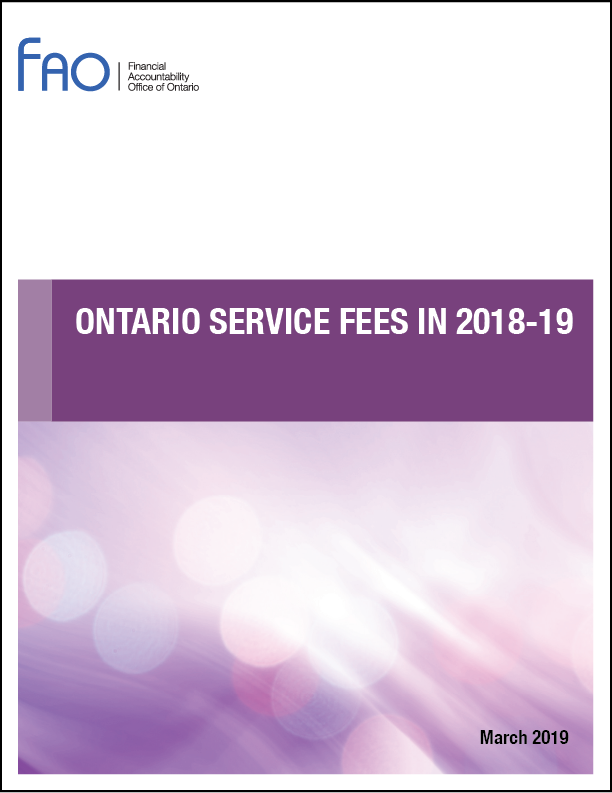Ontario Service Fees in 2018-19

This is a commentary that reviews Ontario’s service fees. The FAO compiled a list of over 1,100 service fees charged by the Province.
About this Document
Established by the Financial Accountability Officer Act, 2013, the Financial Accountability Office (FAO) provides independent analysis on the state of the Province’s finances, trends in the provincial economy and related matters important to the Legislative Assembly of Ontario.
This analysis was prepared by Michelle Gordon and Jeffrey Novak with contributions from Benjamin Premi-Reiller and Luan Ngo.
Ontario Service Fees in 2018-19, Financial Accountability Office of Ontario, 2019.

